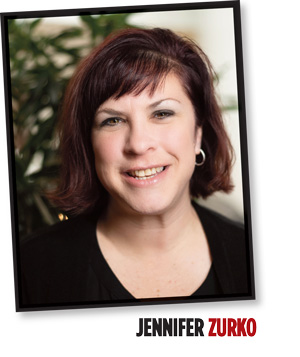3/1/2024
Reporters Have Feelings, Too
Jennifer Zurko

Even if you didn’t grow up in that era or aren’t into history, everyone knows about the Watergate scandal that happened in the early 1970s. The investigation led to 69 people being indicted, 48 people convicted and the eventual resignation of President Richard Nixon.
If you know about this story, you also know two names synonymous with it: Woodward and Bernstein, the two Washington Post reporters that broke the story of the scandal and its cover-up.
Bob Woodward and Carl Bernstein were relentless in their search to dig deep and find the truth about how high the scandal went, all while some of their peers and colleagues downplayed or even tried to discredit their reporting. But after two years of investigating the facts and writing countless articles, both of them earned Pulitzer Prizes for their efforts. Gene Roberts (a former New York Times reporter who himself won 17 Pulitzers in 18 years) called what Woodward and Bernstein did “maybe the single greatest reporting effort of all time.”
If you’re a journalist worth your salt, you know who Woodward and Bernstein are.
That’s why I’ve had Carl Bernstein’s memoir “Chasing History” on my book wish list. I’ve finally got down to reading it and it’s fascinating. As a journalist who cut her teeth in the newspaper world, I’ve been riveted by the old-school days of a 1960s newsroom. That’s when Mr. Bernstein started his career—as a copyboy for The Evening Star when he was 16 years old. One of his first reporting assignments was covering crowd reaction during President John F. Kennedy’s inauguration.
As he was describing his experience on that frigid January day in 1961, one part really hit home for me: “ … for the first time, I felt something far more complicated than whatever details I would be reporting … yes, I was privileged to have my front-row reporter’s seat for a great moment in history, but there was also a palpable stirring about its meaning for the country and perhaps the world that was impossible for me to detach from. It hadn’t occurred to me that a being a reporter could get so mixed up with feelings.”
As a person who is, let’s just say, demonstrative in her reactions and emotions, I understand this. Once you’re entrenched in the industry or the beat that you cover, it’s hard to shake. Journalists get a lot of their information off the record and you do that by cultivating relationships. Not just remembering names, but knowing the names of their businesses, partners, kids, pets, etc. Which can then turn into friendships. Which then means you’re in it completely. And so are your feelings—good, bad or otherwise. Reporter isn’t another word for robot.
So I hope you guys know how seriously we Ball Publishing editors take our jobs. And how fun we think it is! We get to do so many cool things so that we can bring you timely news, information, trends, research, culture and everything in between every week in our newsletters and every month in these pages. One of those cool things is going to industry events like trade shows.
When some people hear the words “trade show,” they think “bo-ring,” but most are far from it. There’s so much to see and so many people to talk to that it’s IMPOSSIBLE to be bored. Which is why we like attending as many winter shows as we can, especially if you can’t. This month is chock-full of loads of new products, technology and trends on both sides. We feel a responsibility to our readers and enjoyment when we get to learn about new stuff and then tell you all about it.
But if you’re lucky enough to attend a couple of the winter trade shows yourself, you should read Katie Elzer-Peters piece on prepping for a trade show and then the follow-up afterwards.
Remember when Bossman Beytes wrote about some of the tools that growers wish they bought sooner back in October 2023? He had so many regretful growers telling him about their late-to-the-party investments that we have a Part 2.
I sometimes wonder how you feel about us editors when you see us at industry events, wandering aisles, asking questions, taking photos, pestering (ahem, interviewing) sources. I hope you know how much we have feelings for the horticulture industry. And if other journalists, trade or otherwise, don’t have these feelings at least part of the time, then they just “work” at a magazine or a newspaper. The feelings are what keep you dedicated to your craft and always striving to do the right thing, no matter the type of story you’re reporting on. GT